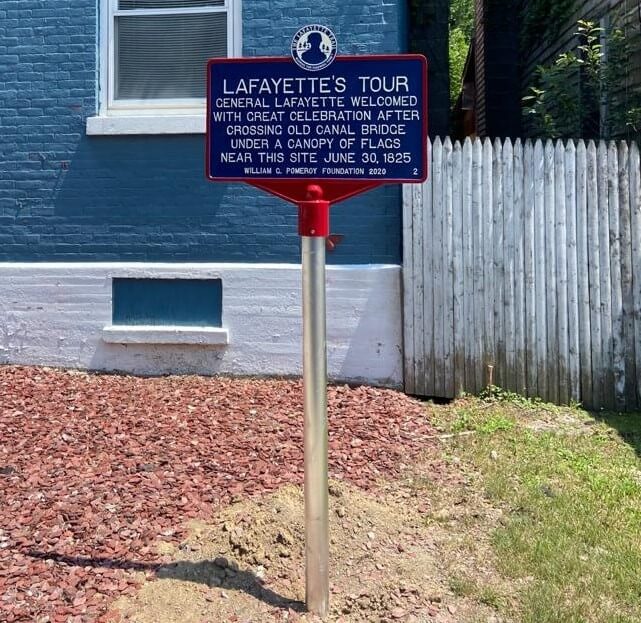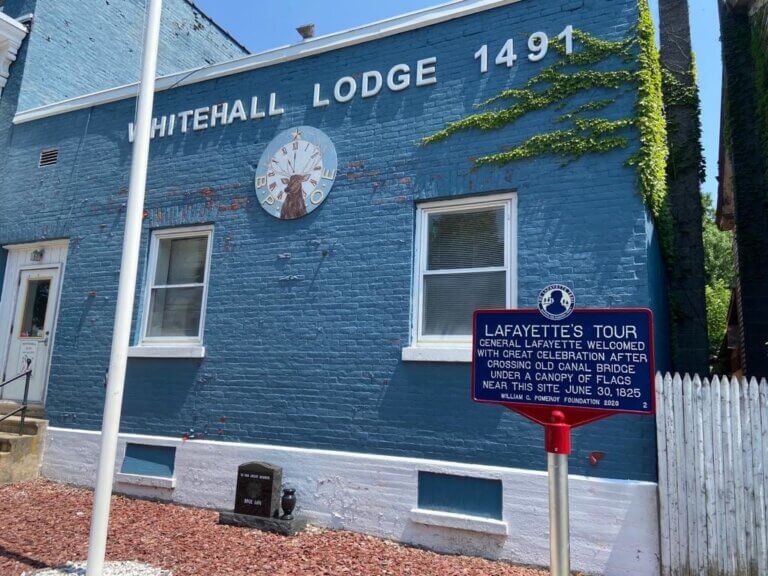LAFAYETTE’S TOUR
- Program
- Subject
- Location
- Lat/Long
- Grant Recipient
-
Lafayette Trail
-
Event, People
- 1491 N Williams St, Whitehall, NY 12887, USA
- 43.5553, -73.4008
-
The Lafayette Trail, Inc.
LAFAYETTE’S TOUR
Inscription
LAFAYETTE'S TOURGENERAL LAFAYETTE WELCOMED
WITH GREAT CELEBRATION AFTER
CROSSING OLD CANAL BRIDGE
UNDER A CANOPY OF FLAGS
NEAR THIS SITE JUNE 30, 1825
WILLIAM G. POMEROY FOUNDATION 2020
When America declared its independence on July 4, 1776, the thirteen colonies were pulled into a conflict with one of the world’s most formidable powers, Great Britain. The colonies’ actions against Great Britain inspired a young French aristocrat and military officer, Marquis de Lafayette, to depart his native France to fight in the American Revolution. Lafayette served as a commander with the Continental Army throughout the war and helped secure French support for the American cause. This support played an integral part in securing American victory during the war.
Celebrated as a hero in the U.S. and France, Lafayette eventually returned to his home country. In 1824 Marquis de Lafayette was invited to visit the United States for the first time in 41 years. As an American hero and one of the only surviving commanders from the Revolution, Lafayette’s visit to the U.S. was highly anticipated and met with a great deal of enthusiasm and excitement. Lafayette’s Tour extended from 1824 to 1825. During this time he visited Washington D.C., as well as major cities and small communities across 24 states.
On June 30, 1825 General Lafayette was welcomed with great celebration in Whitehall, New York after crossing an old canal bridge under a canopy of flags. An August 15, 1825 article from the Natchez Weekly Democrat describes Lafayette’s visit with great dramatic detail:
When General LaFayette was in the village of Whitehall , we learn that after passing the open columns of the military, and as he turned on the bridge,-it was like magic,-about seventy children (little misses from five to nine years of age), appeared and arranged on each side, dressed in snow white habiliments, with garlands of flowers decking their little heads, and small osier baskets under their arms, filled with roses, headed by a young lady of about eighteen years, their tutoress.
The article continues:
They began strewing their roses before the General in such quantities, (making their courtesies as he advanced), that he literally crossed the bridge on a carpet of full blown roses.
This extravagant display and appreciation for Lafayette’s service during the American Revolution deeply moved him. From Whitehall, Lafayette continued his journey onward through the state of New York to New York City.


